#Elephanta Island
Explore tagged Tumblr posts
Text

5 notes
·
View notes
Text

Elephanta Beach, Havelock Island, India: Elephant Beach at Havelock Island is one of the most distinctive beaches in the Andaman Islands. This is a stunning beach famous for its water activity. Elephant Beach is also the most visited beach in the Andaman Archipelago. Once upon a time, there were elephants on the islands they were spotted roaming around on the shores of the beach that is how the beach got its name. There was an elephant training camp close by back then but now there are no elephants that can be seen around the beach.
122 notes
·
View notes
Text
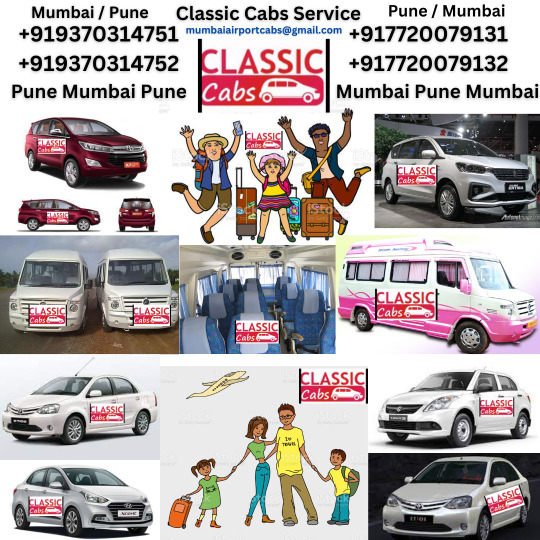
Mumbai Airport Taxi Service Operator, Mumbai Airport, Mumbai, Maharashtra, India
WhatsApp: +919370314751 / 52
Cell: +917720079131 / 32
Cell: +919370314751 / 52
Mumbai Airport: Chhatrapati Shivaji International Airport
Chhatrapati Shivaji Maharaj International Airport, Mumbai, formerly known as Sahar International Airport, is the primary international airport serving the Mumbai Metropolitan Area, India.
Mumbai (formerly called Bombay): City in Maharashtra
Mumbai (formerly called Bombay) is a densely populated city on India’s west coast. A financial center, it's India's largest city. On the Mumbai Harbour waterfront stands the iconic Gateway of India stone arch, built by the British Raj in 1924. Offshore, nearby Elephanta Island holds ancient cave temples dedicated to the Hindu god Shiva. The city's also famous as the heart of the Bollywood film industry.

Mumbai Airport Taxi Service Operator, Mumbai Airport, Mumbai, Maharashtra, India
WhatsApp: +919370314751 / 52
Cell: +917720079131 / 32
Cell: +919370314751 / 52
Mumbai Airport: Chhatrapati Shivaji International Airport
Chhatrapati Shivaji Maharaj International Airport, Mumbai, formerly known as Sahar International Airport, is the primary international airport serving the Mumbai Metropolitan Area, India.
Mumbai (formerly called Bombay): City in Maharashtra
Mumbai (formerly called Bombay) is a densely populated city on India’s west coast. A financial center, it's India's largest city. On the Mumbai Harbour waterfront stands the iconic Gateway of India stone arch, built by the British Raj in 1924. Offshore, nearby Elephanta Island holds ancient cave temples dedicated to the Hindu god Shiva. The city's also famous as the heart of the Bollywood film industry.
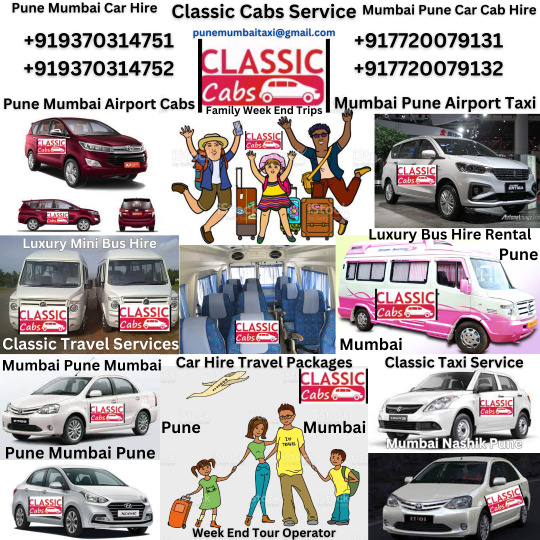
Mumbai Airport Taxi Service Operator, Mumbai Airport, Mumbai, Maharashtra, India
WhatsApp: +919370314751 / 52
Cell: +917720079131 / 32
Cell: +919370314751 / 52
Mumbai Airport: Chhatrapati Shivaji International Airport
Chhatrapati Shivaji Maharaj International Airport, Mumbai, formerly known as Sahar International Airport, is the primary international airport serving the Mumbai Metropolitan Area, India.
Mumbai (formerly called Bombay): City in Maharashtra
Mumbai (formerly called Bombay) is a densely populated city on India’s west coast. A financial center, it's India's largest city. On the Mumbai Harbour waterfront stands the iconic Gateway of India stone arch, built by the British Raj in 1924. Offshore, nearby Elephanta Island holds ancient cave temples dedicated to the Hindu god Shiva. The city's also famous as the heart of the Bollywood film industry.
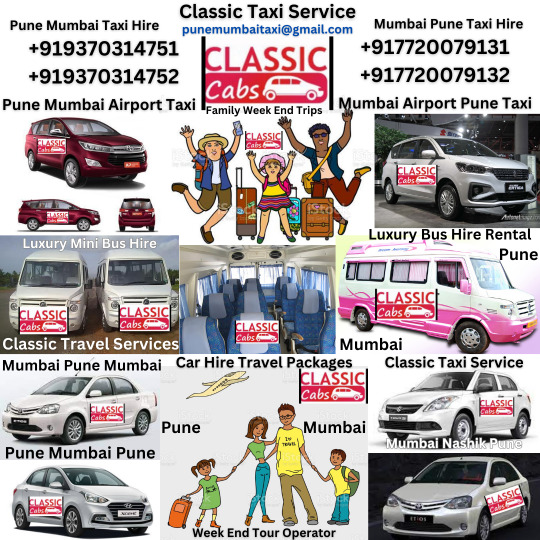
Mumbai Airport Taxi Service Operator, Mumbai Airport, Mumbai, Maharashtra, India
WhatsApp: +919370314751 / 52
Cell: +917720079131 / 32
Cell: +919370314751 / 52
Mumbai Airport: Chhatrapati Shivaji International Airport
Chhatrapati Shivaji Maharaj International Airport, Mumbai, formerly known as Sahar International Airport, is the primary international airport serving the Mumbai Metropolitan Area, India.
Mumbai (formerly called Bombay): City in Maharashtra
Mumbai (formerly called Bombay) is a densely populated city on India’s west coast. A financial center, it's India's largest city. On the Mumbai Harbour waterfront stands the iconic Gateway of India stone arch, built by the British Raj in 1924. Offshore, nearby Elephanta Island holds ancient cave temples dedicated to the Hindu god Shiva. The city's also famous as the heart of the Bollywood film industry.

Mumbai Airport Taxi Service Operator, Mumbai Airport, Mumbai, Maharashtra, India
WhatsApp: +919370314751 / 52
Cell: +917720079131 / 32
Cell: +919370314751 / 52
Mumbai Airport: Chhatrapati Shivaji International Airport
Chhatrapati Shivaji Maharaj International Airport, Mumbai, formerly known as Sahar International Airport, is the primary international airport serving the Mumbai Metropolitan Area, India.
Mumbai (formerly called Bombay): City in Maharashtra
Mumbai (formerly called Bombay) is a densely populated city on India’s west coast. A financial center, it's India's largest city. On the Mumbai Harbour waterfront stands the iconic Gateway of India stone arch, built by the British Raj in 1924. Offshore, nearby Elephanta Island holds ancient cave temples dedicated to the Hindu god Shiva. The city's also famous as the heart of the Bollywood film industry.

Mumbai Airport Taxi Service Operator, Mumbai Airport, Mumbai, Maharashtra, India
WhatsApp: +919370314751 / 52
Cell: +917720079131 / 32
Cell: +919370314751 / 52
Mumbai Airport: Chhatrapati Shivaji International Airport
Chhatrapati Shivaji Maharaj International Airport, Mumbai, formerly known as Sahar International Airport, is the primary international airport serving the Mumbai Metropolitan Area, India.
Mumbai (formerly called Bombay): City in Maharashtra
Mumbai (formerly called Bombay) is a densely populated city on India’s west coast. A financial center, it's India's largest city. On the Mumbai Harbour waterfront stands the iconic Gateway of India stone arch, built by the British Raj in 1924. Offshore, nearby Elephanta Island holds ancient cave temples dedicated to the Hindu god Shiva. The city's also famous as the heart of the Bollywood film industry.

Mumbai Airport Taxi Service Operator, Mumbai Airport, Mumbai, Maharashtra, India
WhatsApp: +919370314751 / 52
Cell: +917720079131 / 32
Cell: +919370314751 / 52
Mumbai Airport: Chhatrapati Shivaji International Airport
Chhatrapati Shivaji Maharaj International Airport, Mumbai, formerly known as Sahar International Airport, is the primary international airport serving the Mumbai Metropolitan Area, India.
Mumbai (formerly called Bombay): City in Maharashtra
Mumbai (formerly called Bombay) is a densely populated city on India’s west coast. A financial center, it's India's largest city. On the Mumbai Harbour waterfront stands the iconic Gateway of India stone arch, built by the British Raj in 1924. Offshore, nearby Elephanta Island holds ancient cave temples dedicated to the Hindu god Shiva. The city's also famous as the heart of the Bollywood film industry.

Mumbai Airport Taxi Service Operator, Mumbai Airport, Mumbai, Maharashtra, India
WhatsApp: +919370314751 / 52
Cell: +917720079131 / 32
Cell: +919370314751 / 52
Mumbai Airport: Chhatrapati Shivaji International Airport
Chhatrapati Shivaji Maharaj International Airport, Mumbai, formerly known as Sahar International Airport, is the primary international airport serving the Mumbai Metropolitan Area, India.
Mumbai (formerly called Bombay): City in Maharashtra
Mumbai (formerly called Bombay) is a densely populated city on India’s west coast. A financial center, it's India's largest city. On the Mumbai Harbour waterfront stands the iconic Gateway of India stone arch, built by the British Raj in 1924. Offshore, nearby Elephanta Island holds ancient cave temples dedicated to the Hindu god Shiva. The city's also famous as the heart of the Bollywood film industry.
#Mumbai Airport Taxi Service Operator#Mumbai Airport#Mumbai#Maharashtra#India#WhatsApp: +919370314751 / 52#Cell: +917720079131 / 32#Cell: +919370314751 / 52#[email protected]#https://sites.google.com/site/mumbaiairporttaxioperator/#Mumbai Airport: Chhatrapati Shivaji International Airport#Chhatrapati Shivaji Maharaj International Airport#formerly known as Sahar International Airport#is the primary international airport serving the Mumbai Metropolitan Area#India.#Mumbai (formerly called Bombay): City in Maharashtra#Mumbai (formerly called Bombay) is a densely populated city on India’s west coast. A financial center#it's India's largest city. On the Mumbai Harbour waterfront stands the iconic Gateway of India stone arch#built by the British Raj in 1924. Offshore#nearby Elephanta Island holds ancient cave temples dedicated to the Hindu god Shiva. The city's also famous as the heart of the Bollywood f
0 notes
Text




The sanctuary of Elephanta, Decan, 6th century
This shrine dates from the VIth century, built on a small island in Mumbai Bay. It is one of the most beautiful examples of Indian rock sculpture with a peak of decorations and expressiveness.
The iconographic program is damaged, but remains complete and is a true mythological synthesis of the god Shiva featured in several myths
It is a cruciform sanctuary which opens on 3 ends decorated with porches with panels and is built around a north south and east west axis with two different and complementary centers of attraction:
- a cella which houses the pure form of Shiva: the linga
- at the very back of the wall a colossal head of the god Shiva with 3 Shivas, called maheshamurti, that is to say “the form of the great god”
This second center which stands out in the darkness : a colossal triple head of Shiva, 5 meters high. The central face has its eyes closed and gives an impression of contemplation, of meditation, it is marked by a fullness, a completeness which can be read thanks to the simplification of the volumes, the symmetry of the features
It represents the immutable balance of the god in meditation
The face on the right is a male face with a mustache: it is the terrible appearance facing a trained cobra, representing the violent, destructive aspect of the god. He wears an ascetic bun with a skull, symbolizing death, the god of asceticism, of yoga, who retires to the Himalayas
The face on the left is feminine, much more rounded, softer, facing a flower with a refined hairstyle and jewelry that recalls elegance.
This triple head which is placed at the same level as the linga. This symbolizes the two great opposite and complementary centers
- The linga : a transcendent god outside the of the world, beyond everything
- The Maheshamurti : a god acting in the world, who manifests himself, who develops in the world and is the world
We therefore have here a double cultual center with an iconic center, representing the god who acts in the world and an emotional center with the linga at the heart of the rituals.
This complementarity in the two centers symbolizes all aspects of the complex figure of Shiva who is an ambivalent god, both ascetic who withdraws from the world, but equally erotic, whose role is to conceive, who is active in the world to act against the demons
He is a destructive and savior god who resolves the tensions of opposites and proposes an overcoming of these forms of duality.
10 notes
·
View notes
Photo


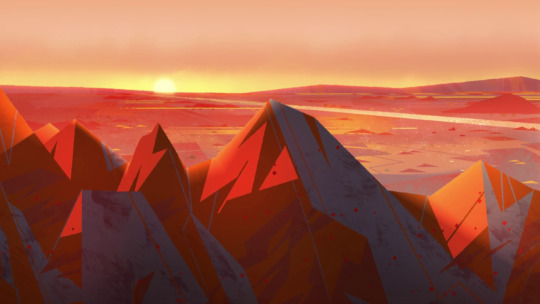

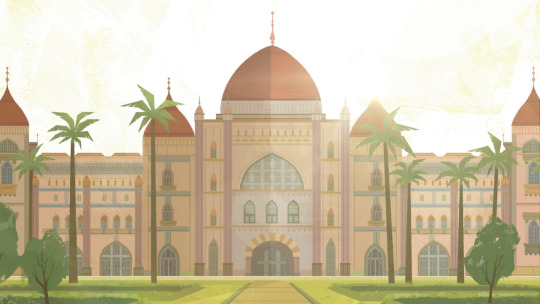
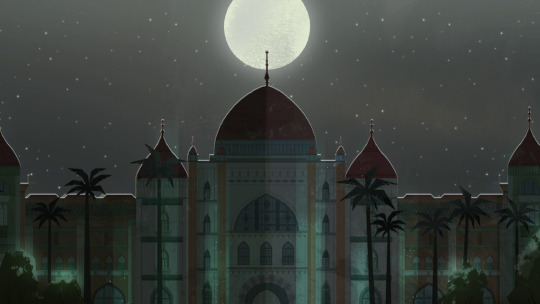



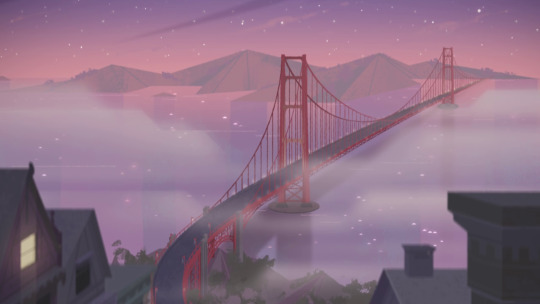
CARMEN SANDIEGO (2019) + locations ║ Australia, Mumbai, Elephanta Island, Agra, and San Francisco [3/?]
#my post#screencap#carmen sandiego 2019#cs 2019 trivia#backgrounds#plus location IDs if you click!#also i've been sticking all the location/reference/nifty details i've picked up in the 'cs 2019 trivia' tag#for anyone else who likes playing 'Name That Landmark' when watching the show XDD#nixariel#oh. apparently they're not showing up on mobile? welp. okay then i guess the IDs are desktop-only :\ but they are there at least ¯\_(ツ)_/¯
23 notes
·
View notes
Text
Mumbai Darshan

Mumbai Darshan: Exploring the City of Dreams
Mumbai, often referred to as the City of Dreams, is a vibrant metropolis that never fails to captivate its visitors. With its rich history, bustling streets, and iconic landmarks, this city offers a plethora of experiences for those looking to soak in its charm. And what better way to explore this city than by embarking on a Mumbai Darshan tour?
Mumbai Darshan is an iconic tour that allows you to witness the essence of this city, its diverse culture, and its architectural marvels. And while there are several options available to explore Mumbai, booking a Mumbai Darshan taxi is considered the ideal and best option. This enables you to enjoy door-to-door pick-up and drop service, taking away the hassle of navigating through the city on your own.
One of the advantages of opting for a Mumbai Darshan taxi is the flexibility it offers. Whether you are traveling alone, with your family, or even in large groups, there are a range of vehicles available to cater to your needs. From small hatchbacks for individual travelers to sedans and SUVs for small groups, Mumbai Darshan taxis have got you covered. For those traveling in bigger groups, there are also options like tempo travelers and buses, ensuring that everyone can enjoy their Mumbai Darshan comfortably.
Embarking on a Mumbai Darshan tour offers a multitude of attractions to explore. One of the must-visit places is the Gateway of India, a historical monument and an iconic symbol of the city. Situated along the Arabian Sea, it offers a breathtaking view of the sea and the magnificent Taj Mahal Palace Hotel. Another landmark that should not be missed is the Marine Drive, a scenic stretch of road that hugs the coastline. Known as the Queen's Necklace, it offers a mesmerizing view of the city's skyline, especially during sunset.
Another highlight of Mumbai Darshan is visiting the famous film studios like Film City and Bollywood Parks. Mumbai, often considered the heart of the Indian film industry, is where dreams are made and movies come to life. Here, you can witness the behind-the-scenes action of how movies are made and even get a chance to meet some of your favorite Bollywood stars.
For those interested in history and culture, a visit to the Elephanta Caves is a must. Located on an island just off the coast of Mumbai, these ancient caves house intricately carved sculptures and rock-cut temples that date back to the 5th and 6th centuries. It is a UNESCO World Heritage Site and offers a glimpse into the rich cultural heritage of the region.
No Mumbai Darshan tour would be complete without exploring the local markets and trying out the street food. From the bustling Crawford Market to the vibrant Colaba Causeway, these markets offer a plethora of shopping options ranging from clothing and accessories to antiques and handicrafts. And when it comes to food, Mumbai is a food lover's paradise. From the lip-smacking vada pav and pav bhaji to the delectable seafood at the famous Juhu Beach, the city's street food scene never disappoints
In conclusion, Mumbai Darshan offers a unique opportunity to explore the enchanting city of dreams. With the convenience of a Mumbai Darshan taxi, you can immerse yourself in the vibrant culture, architectural wonders, and culinary delights that this city has to offer. So, if you're looking to experience the true essence of Mumbai, book your Mumbai Darshan tour today and embark on a journey that will leave you with memories to cherish for a lifetime.
2 notes
·
View notes
Text
Elephanta Island, India,
Women posing for photos in front of huge rock carvings on Elephanta Island, near Mumbai, Maharastra ,India 👌🖌️🎨

3 notes
·
View notes
Text
Things to do in Mumbai

Mumbai activities that consider the city’s extensive history, eclectic culture, mouthwatering cuisine, and well-known landmarks. This improved tour provides a more thorough look at this vibrant city:

Mumbai, often known as Bombay, is the financial and entertainment center of India. It is a city that is continually busy. Here, tradition, culture, and modernity all coexist to give visitors an extraordinary and one-of-a-kind experience. One of your first destinations should be the magnificent Gateway of India, a symbol of Mumbai’s past and a well-liked expedition starting point. Some of the best specimens of Victorian Gothic architecture can be found in the surrounding historic Chhatrapati Shivaji Maharaj Terminus, a UNESCO World Heritage site.
The museums in Mumbai maintain its cultural heritage. Visit the Chhatrapati Shivaji Maharaj Vastu Sangrahalaya to discover how art and history are entwined and the Dr. Bhau Daji Lad Institute to learn about the history of the city.
There is a sensory explosion of sights, sounds, and smells in Mumbai’s crowded markets. The well-known retail district Colaba Causeway is where you can find a wide selection of apparel, jewelry, handicrafts, and souvenirs. Contrarily, Crawford Market is a bustling center for locally grown foods, spices, and other pleasures. While visiting these marketplaces, don’t forget to try some of Mumbai’s renowned street cuisine. The city’s street food culture is a gastronomic journey all on its own with dishes like the hot vada pav, delicious pav bhaji, and tangy bhel puri.
To get a taste of Mumbai’s diversity, visit Dharavi, one of Asia’s largest slums, where you can take a guided tour and hear about the resilience and creativity of its residents. This in-depth encounter will put your prejudices to the test, and you’ll leave with a newfound respect for the feeling of community in the area.
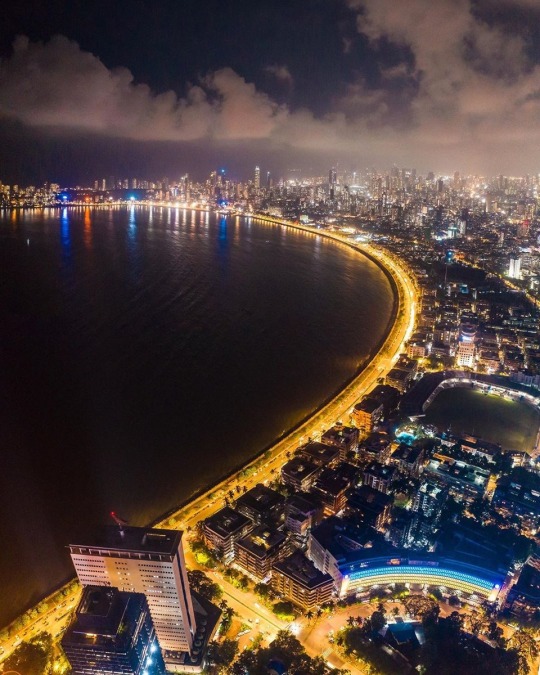
Take a stroll down Marine Drive, often known as the Queen’s Necklace due to its brilliant nighttime lights, to fully experience Mumbai’s coastal allure. Because of the spectacular views of the Arabian Sea at sunset, both locals and tourists love this promenade.
Get out of the congested city streets and explore the mysterious Elephanta Caves. From Mumbai, you can immediately take a ferry to Elephanta Island, where you can explore historic rock-cut tunnels decorated with incredible sculptures and carvings, including the well-known Trimurti sculpture.
The old and the contemporary coexist in Mumbai, a city of contrasts. Although it is a thriving metropolis, it values its spiritual past. Mumbai’s religious diversity is honored by the majestic mosque known as Haji Ali Dargah, which is located on an island in the Arabian Sea and offers a calm sanctuary from the activity of the city. An additional sacred place and a representation of the city’s devotion is the Siddhivinayak Temple, which is devoted to Lord Ganesha.

Consider taking a day excursion to Sanjay Gandhi National Park, a huge oasis in the middle of the urban jungle, if you’re looking for a closer connection with nature. Hike through the area’s lush vegetation, take in the Kanheri Caves’ old Buddhist sculptures, and maybe you’ll even spot some local species like deer and leopards.
As soon as the sun goes down, Mumbai’s thriving nightlife bursts to life. Among other fun locations, rooftop bars and live music venues provide views of the Arabian Sea. If you really want to comprehend Mumbai, go see a Bollywood film in one of its best theaters. You’ll get a taste of the glamour and drama of Mumbai’s Bollywood thanks to this cultural encounter.

Mumbai’s inhabitants also referred to as Mumbaikars, are a testament to the city’s tenacity in a context defined by its frenetic speed and ambition. Mumbai is more than just a tourist destination because of the people’s tenacity, kindness, and feeling of community; it is an encounter that will have a lasting effect on your heart and spirit. Mumbai offers a fascinating voyage full of discoveries and activities, whether you want to experience the city’s vibrant energy or go sightseeing and eat street food.
Conclusion
In Mumbai, every street has a distinct history to share, every turn is an exhilarating journey, and every encounter with a local is precious. Mumbai is a lovely, energetic city. For travelers seeking an exciting and engaging experience, this city is a must-visit destination because it has many facets and embodies India’s past, present, and future. Whether you’re exploring iconic landmarks like the Gateway of India or savoring the vibrant street food scene, every moment in Mumbai is enriched by the city’s vibrant spirit. When it’s time to rest and recharge, the Empresa Hotel comfortable and convenient haven amidst the bustling streets, ensuring your stay in this dynamic city is both memorable and enjoyable. The hotel is marveled with immaculate rooms, exquisite dining halls, rooftop lounges, banquet halls, and a myriad of other best-in-class facilities. It is located in the midst of Lokhandwala which is full of energy fun shopping and food.
#Mumbai#Things to do in mumbai#hotel in mumbai#travel blog#travel bloger#hotel#travel#traveling#travel in mumbai#tourists
2 notes
·
View notes
Text
Sailing in Style: Your Guide to Princess Yachts Dealers in Mumbai
As the sun sets over the Arabian Sea, the allure of luxury yachting beckons in Mumbai. For those seeking the epitome of maritime elegance, Princess Yachts stand tall as a symbol of opulence and craftsmanship. In this article, we'll navigate the waters of Mumbai's yachting scene, ensuring that your quest for the perfect Princess Yachts dealer is not just a journey but an unforgettable experience.
I. Unveiling Princess Yachts: A Maritime Marvel:
Before delving into Mumbai's bustling yacht market, let's explore the allure of Princess Yachts. Renowned for their exquisite design and cutting-edge technology, each vessel is a testament to nautical sophistication. Learn about the legacy that has made Princess Yachts the choice of discerning yachting enthusiasts worldwide.
II. Mumbai's Yachting Landscape:
Mumbai, a city pulsating with life, is also home to a thriving yachting community. From the iconic Gateway of India to the serene shores of Elephanta Island, the city's coastline is a canvas for maritime dreams. Discover the evolving yacht culture in Mumbai and how Princess Yachts seamlessly fit into this dynamic seascape.
III. Choosing Your Princess Yachts Dealer in Mumbai:
● Reputation and Credibility:
Investigate the dealer's reputation through online reviews and testimonials. Gauge their credibility by assessing industry affiliations and certifications. A trustworthy dealer is the foundation of a successful yachting partnership. ●
Fleet Diversity and Customization:
Evaluate the range of Princess Yachts offered, ensuring diversity to meet varied preferences.
Assess the dealer's capability for customization to align with your unique vision. A versatile fleet and customization options cater to individual tastes and requirements.
●
Technical Prowess and Support Services:
Scrutinize the dealer's technical expertise and knowledge of Princess Yachts. Inquire about post-purchase support services, including maintenance and training.
A dealer with comprehensive technical know-how ensures a smooth sailing experience.
●
Legalities and Transparency:
Ensure the dealer adheres to legal requirements and regulations.
Request transparency in all documentation, including ownership transfer processes.
Clarity in legal matters is essential for a secure and hassle-free yacht acquisition. ●
Pricing Structure and Financial Options:
Compare pricing structures among potential dealers.
Inquire about financing options and any additional costs.
A dealer offering transparent pricing and flexible financial solutions enhances the buying experience.
Conclusion
In the vibrant tapestry of Mumbai's yachting scene, finding the right Princess Yachts dealer is the key to unlocking a world of maritime luxury. Armed with the insights from this guide, embark on your journey with confidence, knowing that your Princess Yacht experience will be nothing short of extraordinary. The seas await, and with the right dealer, your voyage will be a seamless blend of style, sophistication, and unparalleled adventure.
Navnit Marine
Navnit Marine is a Boats and Yachts Dealers in Mumbai India. Buy Luxury Boats and Yachts at the best price. We also do servicing of Boats and Yachts Mumbai …
0 notes
Text

3 notes
·
View notes
Link
Elephanta Caves are a UNESCO World Heritage Site and a collection of cave temples predominantly dedicated to the Hindu god Shiva. They are located on Elephanta Island, or Gharapuri in Mumbai Harbour, 10 kilometres to the east of the city of Mumbai in the Indian state of Mahārāshtra. Trimurti is the most renowned sculpture in mandapa of the Great Cave is Trimurti (Trimurthy) – sculpture with three faces of Shiva. It is located on the south wall of mandapa and is 6.1 m high. Trimurti resembles a Trinity of Brahma, Vishnu and Mahesh (Shiva) – royal insignia of Rashtrakutas. #Tours2Go #ToursToGo
#ArchaeologyTours#BusTours#CarTours#ExcellentQuality#HistoricalTours#LikelytoSellOut#PortsofCallTours#PrivateandLuxury#PrivateSightseeingTours#ShoreExcursions#Trending#WaterTours
0 notes
Text
Places to Visit in Mumbai: The City of Dreams
Often referred to as the “City of Dreams,” Mumbai is a cosmopolitan metropolis that enjoys a unique mix of history, culture and modernity. Mumbai is home to many of the most famous landmarks and scenic beaches, making it a delight for every traveler. You can refer to below for a list of most places to visit in Mumbai.
Gateway of India

Overlooking the Arabian Sea is the iconic Gateway of India in Mumbai. Built in 1924, this architectural beauty reflects the glorious history and colonial heritage of the city.” No one who visits Mumbai should miss it: the views are gorgeous, and you get a sense of its heritage.”
Marine Drive: Mumbai’s Jewel

Mumbai Marine Drive, also known as the “Queen’s Necklace,” is a picturesque boulevard along the coastline. A stroll along this famed stretch — particularly at sunset, when the city’s skyline sparkles prettily — is highly recommended. This is a perfect place to unwind and absorb the essence of Mumbai.
Chhatrapati Shivaji Maharaj Terminus

A UNESCO World Heritage Site, Chhatrapati Shivaji Maharaj Terminus is a monument to Mumbai's architectural splendour. This Victorian Gothic styled railway station is an active hub combining functionality with artistry.
Juhu Beach

Spending time at Juhu Beach is an integral part of a Mumbai visit. Known for the vibrant street food scene, this beach is a true Bombay experience. Savor local specialties such as pav bhaji and bhel puri while absorbing the soft sea breeze and vibrant ambiance.
Siddhivinayak Mandir

A bud without a petal is the Siddhivinayak Mandir, It is one of the sacred temples found in Mumbai. This temple, devoted to Lord Ganesha, receives thousands of devotees every day. Whether to seek faith or just experience its magnificent architecture, it is a worthy visit.
Elephanta Caves

Elephanta Caves Situated on Elephanta Island, the Elephanta Caves are a UNESCO World Heritage Site that features ancient rock-cut sculptures and carvings. A brief ferry ride from the Gateway of India, these caves are said to be a treasure hoard of history and art, offering vignettes of India’s rich cultural heritage.
Unique Places to Visit in Mumbai
However, if you want above par experiences, Mumbai is all packed with them. Take a bicker of a street art at Bandra’s Chapel Road, hit the cool-hooded Hanging Gardens or admire the hidden gems of the Dharavi’s art and entrepreneurial hubs. If you step outside the usual trail, these Unique places to visit in Mumbai will give you a whole new view of the city!
Travel Tips to India
If there is a first time for planning a trip to India, this can be an adventure of a lifetime. In order to make your journey easier, be sure to take note of these Travel Tips to India.
Never travel without a copy of your passport and visa.
Dress conservatively, especially when visiting places of worship.
Drinking tap water is be avoided and make sure you are hydrated.
Opt for clothes that can see you through different weather conditions, especially the humidity of Mumbai.
India Tourist Visa Price
You must receive an idea of how much is the India Tourist Visa Price before you make your reservation for the trip. It really depends on your country and visa. Please refer to the latest updates for the most up-to-date information.
Visiting India for the First Time
If you’re visiting India for the first time, Mumbai is a great place to begin. The given energy of the city, paired with its generous ethos, adds up to an memorable place to go. Soak in the local culture, taste local dishes, and please feel free to speak to locals as much as possible as it will add to your experience.
Closing Remarks of Blog
Tell us about you, though—Mumbai is a city you just can’t say no to. The enchanting Gateway of India, majestic Marina Drive, fabulous Elephanta Caves are but a few examples of the tales that can be told at every nook and corner in Mumbai. Find out everything you need to know about visiting this cosmopolitan favorite, and see for yourself why so many people love this city.
#places to visit in mumbai#unique places to visit in mumbai#gateway of india#mumbai marine drive#Chhatrapati Shivaji Maharaj Terminus#juhu beach#siddhivinayak mandir#Elephanta Caves#travel tips to india#India tourist visa price#visiting india for the first time
0 notes
Text
Mumbai Airport Taxi Service Operator, Mumbai Airport, Mumbai, Maharashtra, India
WhatsApp: +919370314751 / 52
Cell: +917720079131 / 32
Cell: +919370314751 / 52
Mumbai Airport: Chhatrapati Shivaji International Airport
Chhatrapati Shivaji Maharaj International Airport, Mumbai, formerly known as Sahar International Airport, is the primary international airport serving the Mumbai Metropolitan Area, India.
Mumbai (formerly called Bombay): City in Maharashtra
Mumbai (formerly called Bombay) is a densely populated city on India’s west coast. A financial center, it's India's largest city. On the Mumbai Harbour waterfront stands the iconic Gateway of India stone arch, built by the British Raj in 1924. Offshore, nearby Elephanta Island holds ancient cave temples dedicated to the Hindu god Shiva. The city's also famous as the heart of the Bollywood film industry.
Mumbai Airport Taxi Service Operator, Mumbai Airport, Mumbai, Maharashtra, India
WhatsApp: +919370314751 / 52
Cell: +917720079131 / 32
Cell: +919370314751 / 52
Mumbai Airport: Chhatrapati Shivaji International Airport
Chhatrapati Shivaji Maharaj International Airport, Mumbai, formerly known as Sahar International Airport, is the primary international airport serving the Mumbai Metropolitan Area, India.
Mumbai (formerly called Bombay): City in Maharashtra
Mumbai (formerly called Bombay) is a densely populated city on India’s west coast. A financial center, it's India's largest city. On the Mumbai Harbour waterfront stands the iconic Gateway of India stone arch, built by the British Raj in 1924. Offshore, nearby Elephanta Island holds ancient cave temples dedicated to the Hindu god Shiva. The city's also famous as the heart of the Bollywood film industry.
#Mumbai Airport Taxi Service Operator#Mumbai Airport#Mumbai#Maharashtra#India#WhatsApp: +919370314751 / 52#Cell: +917720079131 / 32#Cell: +919370314751 / 52#[email protected]#https://sites.google.com/site/mumbaiairporttaxioperator/#Mumbai Airport: Chhatrapati Shivaji International Airport#Chhatrapati Shivaji Maharaj International Airport#formerly known as Sahar International Airport#is the primary international airport serving the Mumbai Metropolitan Area#India.#Mumbai (formerly called Bombay): City in Maharashtra#Mumbai (formerly called Bombay) is a densely populated city on India’s west coast. A financial center#it's India's largest city. On the Mumbai Harbour waterfront stands the iconic Gateway of India stone arch#built by the British Raj in 1924. Offshore#nearby Elephanta Island holds ancient cave temples dedicated to the Hindu god Shiva. The city's also famous as the heart of the Bollywood f
1 note
·
View note
Text
How Many Days Required for Andaman Tour?
Planning a trip to the Andaman Islands is an exciting journey into a tropical paradise. Known for their stunning beaches, vibrant marine life, and lush greenery, the Andaman and Nicobar Islands are perfect for every type of traveler. But one common question arises: How many days are required for an Andaman tour? This blog will guide you through the ideal duration for your visit and help you plan a perfect vacation using the best Andaman tour packages and Andaman Nicobar packages.
Ideal Duration for an Andaman Tour
The ideal duration for an Andaman tour depends on your interests and the places you want to explore. Typically, a 5 to 7-day trip is sufficient to experience the best of the Andaman Islands. Here's a breakdown of how you can plan your trip:
Day 1: Arrival in Port Blair
Your journey begins with your arrival at Port Blair, the capital of the Andaman Islands. Spend the day exploring local attractions like the Cellular Jail, Corbyn's Cove Beach, and the mesmerizing Light and Sound Show. Many Andaman tour packages include guided tours of these iconic sites to make your first day memorable.
Day 2: Havelock Island
On the second day, take a ferry to Havelock Island, one of the most popular destinations in the Andamans. Known for Radhanagar Beach, voted one of Asia’s best beaches, this island is a paradise for nature lovers and adventure enthusiasts. Relax on the pristine sands or dive into thrilling activities like snorkeling and scuba diving, often included in premium Andaman Nicobar packages.
Day 3: Elephanta Beach and Water Activities
Spend your third day enjoying water sports at Elephanta Beach. From banana boat rides to glass-bottom boat tours, the beach offers a range of activities to explore the vibrant underwater world. Many Andaman tour packages provide exclusive access to these activities, ensuring a fun-filled day.
Day 4: Neil Island
Head to Neil Island, a tranquil destination known for its laid-back vibe and beautiful beaches like Bharatpur, Laxmanpur, and Sitapur. This is the perfect place to relax, soak in the natural beauty, and enjoy delicious local seafood. Don’t forget to capture stunning sunsets for lasting memories.
Day 5: Baratang Island or Ross and Smith Islands
For those staying longer, a visit to Baratang Island or Ross and Smith Islands can add a unique twist to your Andaman adventure. Baratang is famous for its limestone caves and dense mangrove forests, while Ross and Smith Islands offer a rare twin-island experience connected by a natural sandbar.
Day 6: Relaxation and Local Shopping
Use this day to unwind and explore the local markets in Port Blair. Purchase souvenirs such as shell jewelry, wooden artifacts, and handicrafts to take home a piece of the Andamans.
Day 7: Departure
Wrap up your trip with a leisurely breakfast before heading to the airport. Many Andaman Nicobar packages include drop-off services, making your departure hassle-free.
Factors to Consider When Planning Your Trip
Travel Goals: If you are an adventure enthusiast, you might want to spend more time on Havelock Island for water sports. For history buffs, an extra day in Port Blair might be ideal.
Budget: Choose from a range of Andaman tour packages that fit your budget. Luxury packages offer premium services, while budget-friendly options focus on essential experiences.
Season: The best time to visit is between October and May, offering pleasant weather and calm seas for ferry rides and water activities.
Connectivity: Ensure that your chosen package includes transportation between islands to save time and avoid last-minute hassles.
Customizing Your Andaman Nicobar Packages
The Andaman Islands have something for everyone. By choosing customizable Andaman Nicobar packages, you can:
Extend your stay on specific islands.
Include or exclude certain activities based on your preferences.
Upgrade accommodations for a more luxurious experience.
Final Thoughts
The number of days required for an Andaman tour varies based on individual preferences, but a 5 to 7-day itinerary is perfect for most travelers. Whether you’re looking for adventure, relaxation, or cultural exploration, the Andaman Islands offer it all. Opt for well-designed Andaman tour packages and Andaman Nicobar packages to make the most of your trip. Start planning your Andaman getaway today and create memories to last a lifetime in this tropical paradise!
0 notes
Text
Best Places to Visit in Mumbai: A Complete Guide

Mumbai, often called the "City of Dreams," is a bustling metropolis that beautifully blends culture, heritage, and modernity. Whether you're a tourist, a couple looking for romantic spots, a family seeking fun outings, or a night owl eager to explore its nightlife, Mumbai has something for everyone. Here's an in-depth look at the best places to visit in Mumbai.
1. Gateway of India
The Gateway of India is one of Mumbai's most iconic landmarks. Overlooking the Arabian Sea, it was built in 1924 to commemorate the visit of King George V and Queen Mary. It’s a great place to visit in Mumbai to soak in the colonial architecture and enjoy a ferry ride to Elephanta Caves.
Ideal for: Families, couples, and history enthusiasts
Best time to visit: Early morning or late evening to avoid crowds
Stays: Hotels in Mumbai
2. Marine Drive
Known as the "Queen's Necklace," Marine Drive is a crescent-shaped boulevard offering stunning views of the Arabian Sea. It’s the perfect spot to take a relaxing walk, watch the sunset, or simply enjoy the sea breeze.
Places to visit in Mumbai for couples: Stroll hand-in-hand or enjoy a romantic evening as the city lights reflect on the water.
Places to visit in Mumbai at night: Marine Drive transforms into a dazzling spectacle after dark.
3. Juhu Beach
Juhu Beach is synonymous with Mumbai’s coastal charm. It’s a favorite among locals and tourists for its lively atmosphere, street food, and serene sunsets.
Ideal for families: Kids can enjoy camel and horse rides, while adults indulge in delicious snacks like pav bhaji and bhel puri.
Couples’ corner: Enjoy a peaceful evening walk along the shoreline.
Stays: 24 Hours Check in Hotels in Mumbai
4. Chhatrapati Shivaji Maharaj Terminus (CSMT)
A UNESCO World Heritage Site, this railway station is a masterpiece of Victorian Gothic Revival architecture. Its grandeur and intricate design make it a must-visit spot.
Perfect for history lovers: Admire its architecture and learn about Mumbai's colonial past.
Stays: Unmarried Couple Friendly Hotels in Mumbai
5. Sanjay Gandhi National Park
Located in the heart of the city, this sprawling park is a haven for nature enthusiasts. It’s home to the Kanheri Caves, lush greenery, and diverse wildlife.
Places to visit in Mumbai with family: Enjoy a mini-train ride, boating, or a trek to the Kanheri Caves.
For couples: A quiet retreat amidst nature’s beauty.
6. Colaba Causeway
A shopper’s paradise, Colaba Causeway is famous for its vibrant street markets, antique shops, and trendy cafes. It’s also a cultural hotspot, with art galleries and street performances adding to its charm.
Best for families and couples: Shop for souvenirs or enjoy a coffee at Leopold Café.
7. Bandra-Worli Sea Link
An architectural marvel, the Bandra-Worli Sea Link connects two prominent suburbs of Mumbai. Driving across the bridge offers panoramic views of the city skyline.
Ideal for: Couples seeking a scenic drive and photography enthusiasts.
8. Haji Ali Dargah
This iconic mosque and dargah are situated on an islet off the coast of Worli. It’s not just a religious site but also a symbol of Mumbai’s cultural diversity.
Places to visit in Mumbai with family: Witness the spiritual vibe and stunning sea views.
For couples: The serene atmosphere makes it a unique experience.
Stays: Day Stay Hotels in Mumbai
9. Elephanta Caves
A short ferry ride from the Gateway of India takes you to the Elephanta Caves, another UNESCO World Heritage Site. These ancient rock-cut caves are dedicated to Lord Shiva and are a marvel of Indian art and architecture.
Ideal for history buffs and families: Explore the caves and enjoy the island’s tranquility.
10. Girgaum Chowpatty
A hotspot for foodies, Girgaum Chowpatty offers a mix of delicious street food and scenic views. It’s also a popular venue for cultural events like Ganesh Chaturthi celebrations.
Best for families: Relish Mumbai’s street food while kids play on the sandy shores.
Nighttime appeal: The illuminated cityscape adds a magical touch.
11. Siddhivinayak Temple
One of Mumbai’s most revered temples, Siddhivinayak is dedicated to Lord Ganesha. Devotees from all over the country visit this temple to seek blessings.
Perfect for families: Experience the spiritual essence of Mumbai.
Tip for couples: Visit during non-peak hours for a peaceful darshan.
12. Chhatrapati Shivaji Maharaj Vastu Sangrahalaya (CSMVS)
Formerly known as the Prince of Wales Museum, this is one of India’s premier museums. It houses a vast collection of artifacts, including ancient sculptures, miniature paintings, and natural history exhibits.
For history enthusiasts and families: A great place to explore Mumbai’s rich heritage.
13. Powai Lake
A picturesque artificial lake, Powai Lake is a serene escape from the city’s hustle and bustle. It’s a great spot for picnics and photography.
For couples: Enjoy a romantic evening by the lakeside.
For families: Kids can enjoy spotting migratory birds.
14. Mumbai’s Nightlife
Mumbai comes alive at night with its vibrant nightlife. From upscale bars and clubs in Bandra and Lower Parel to local hangouts at Marine Drive, the city offers endless options.
Places to visit in Mumbai at night: Enjoy a night out at Colaba Social, dance at Tryst, or unwind at a seaside café.
15. Worli Fort
Built by the British in the 17th century, Worli Fort is a hidden gem offering breathtaking views of the Arabian Sea and Bandra-Worli Sea Link.
Perfect for couples and history buffs: A quiet place to explore and enjoy the view.
16. Kala Ghoda
Mumbai’s art district, Kala Ghoda, is a must-visit for art lovers. It’s home to galleries, boutiques, and cultural spaces, and hosts the famous Kala Ghoda Arts Festival every year.
For families: Explore interactive exhibits and workshops.
For couples: Enjoy a cultural date exploring art and crafts.
17. Film City
Mumbai is synonymous with Bollywood, and a tour of Film City is a fascinating experience. Witness the magic behind the scenes of India’s film industry.
Best for families: Kids and adults alike will enjoy spotting movie sets.
For couples: Relive cinematic moments in a real studio setup.
18. Mount Mary Basilica
Situated in Bandra, this Roman Catholic Church is known for its stunning architecture and peaceful ambiance. It’s particularly popular during the Bandra Fair.
For families: A spiritual outing with historical significance.
For couples: A serene retreat with panoramic views of the sea.
Mumbai is a city that never ceases to amaze. Whether you’re exploring iconic landmarks, indulging in street food, or experiencing its vibrant nightlife, there’s always something new to discover. From the best places to visit in Mumbai with family to romantic spots for couples and late-night adventures, this city truly offers an unforgettable experience. So, pack your bags and get ready to explore the magic of Mumbai!
0 notes
Text
The Elephanta Festival: A Celebration of Dance and Culture
The Elephanta Festival, held annually in the picturesque setting of Elephanta Island near Mumbai, serves as a vibrant homage to the rich tapestry of India’s artistic heritage. Organized by the Maharashtra Tourism Development Corporation (MTDC) since its inception in 1989, the festival aims to promote both tourism and cultural awareness, reinforcing the significance of dance, art, and tradition within the broader Indian context.

1 note
·
View note